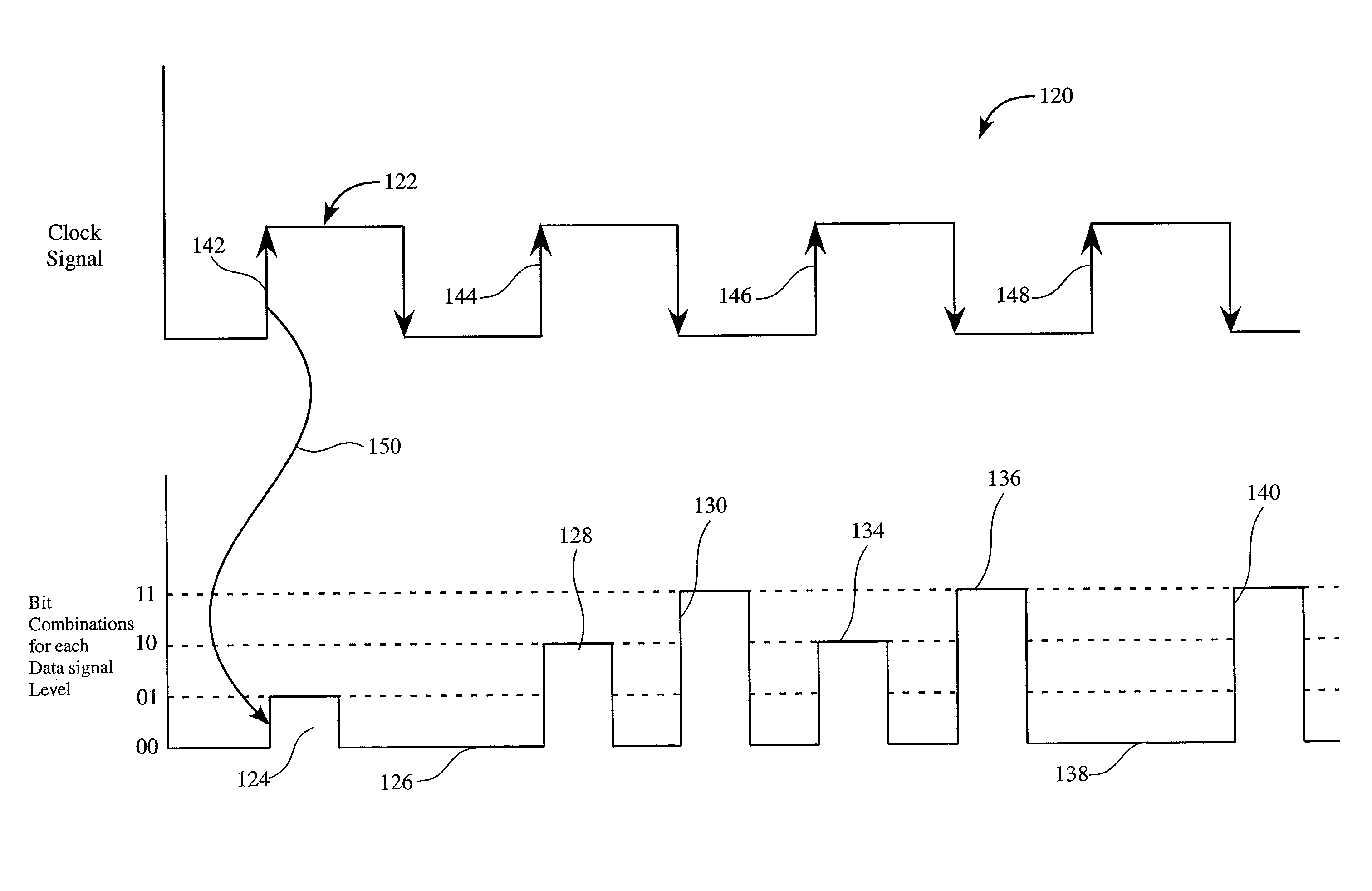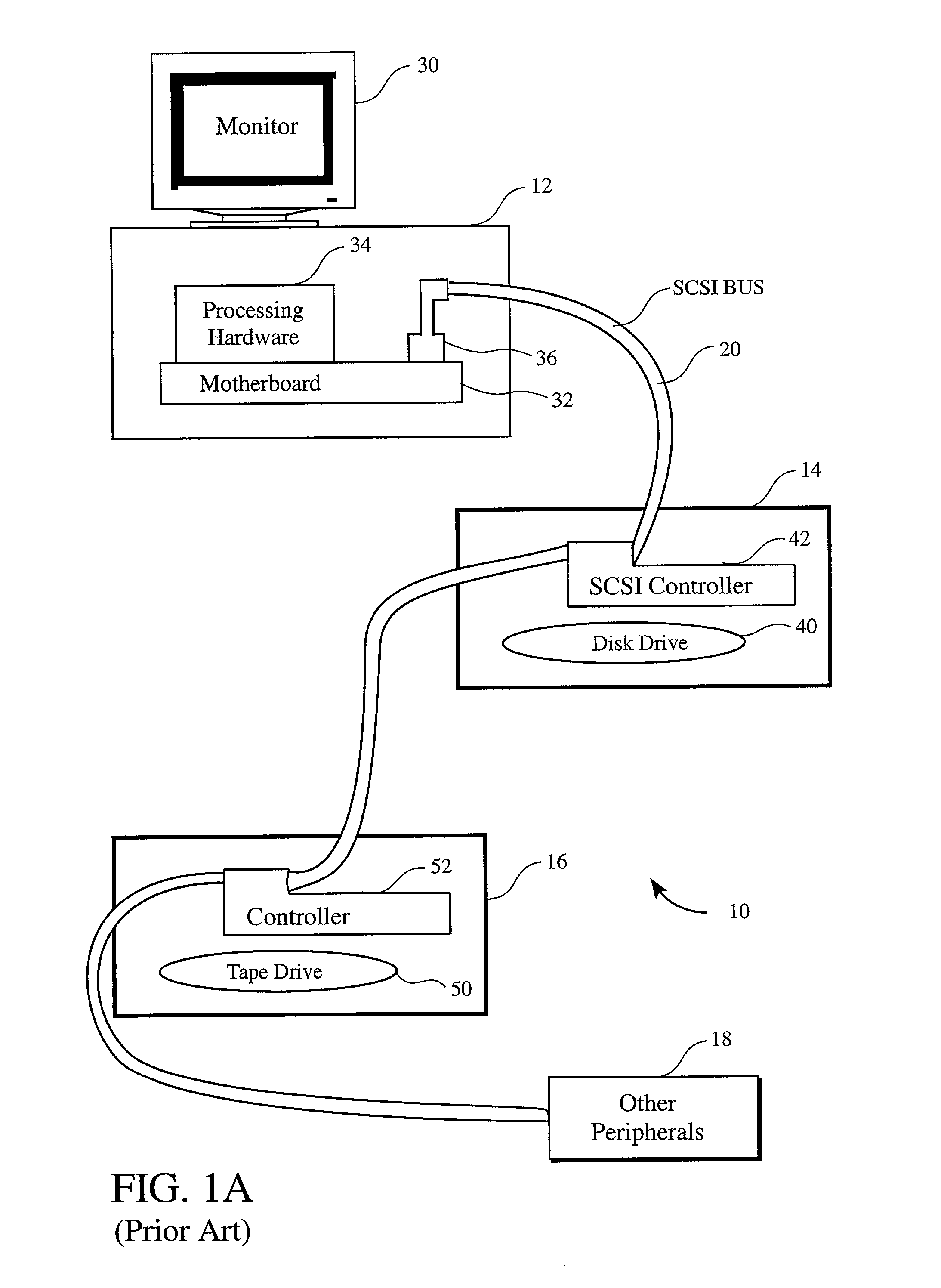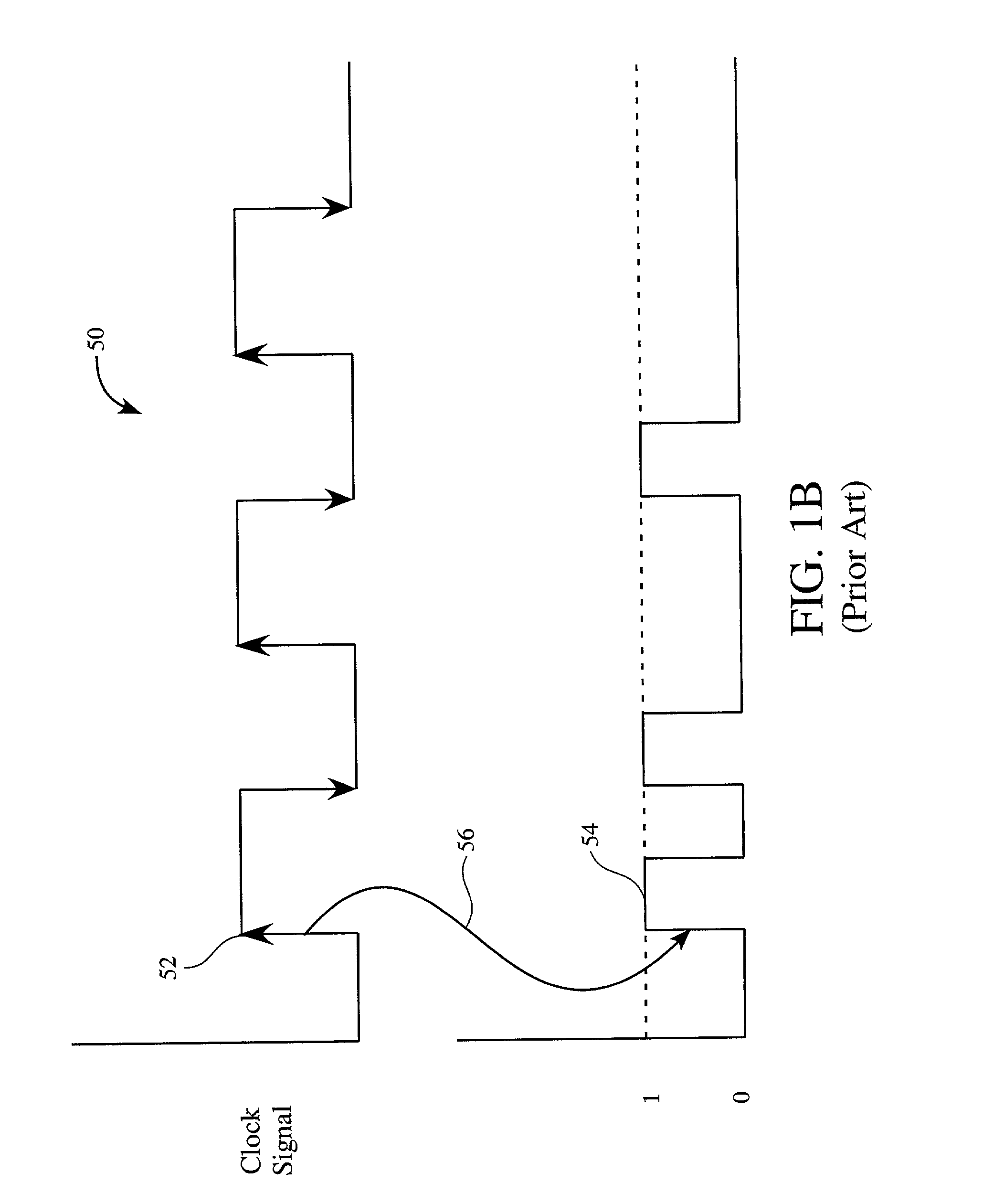Method to transmit bits of data over a bus
a bus and data technology, applied in the field of computing technology, can solve the problems of limited data transmission through the bus, severe limits on the amount of data throughput that can be transmitted through the bus, and inability to send more than 2 bits per clock cycle in the general direction of synchronous/start-stop systems,
- Summary
- Abstract
- Description
- Claims
- Application Information
AI Technical Summary
Benefits of technology
Problems solved by technology
Method used
Image
Examples
Embodiment Construction
[0031]An invention is described for a method of expanding a bus so an optimized amount of data may be transmitted in a computer system. In this methodology, multilevel coding is utilized to transmit multiple bits of data per signal level in a digital data transmission system. It will be obvious, however, to one skilled in the art, that the present invention may be practiced without some or all of these specific details. In other instances, well known process operations have not been described in detail in order not to unnecessarily obscure the present invention.
[0032]The data transmission methodology described herein enables many times more data to be sent in a same data transmission media than prior art systems. The multilevel coding described herein enables multiple data voltage levels to be utilized to transport a larger amount of data than previously possible. In one embodiment, the multilevel coding has four levels of voltage each signifying a different data content. Therefore ...
PUM
 Login to View More
Login to View More Abstract
Description
Claims
Application Information
 Login to View More
Login to View More - R&D
- Intellectual Property
- Life Sciences
- Materials
- Tech Scout
- Unparalleled Data Quality
- Higher Quality Content
- 60% Fewer Hallucinations
Browse by: Latest US Patents, China's latest patents, Technical Efficacy Thesaurus, Application Domain, Technology Topic, Popular Technical Reports.
© 2025 PatSnap. All rights reserved.Legal|Privacy policy|Modern Slavery Act Transparency Statement|Sitemap|About US| Contact US: help@patsnap.com



